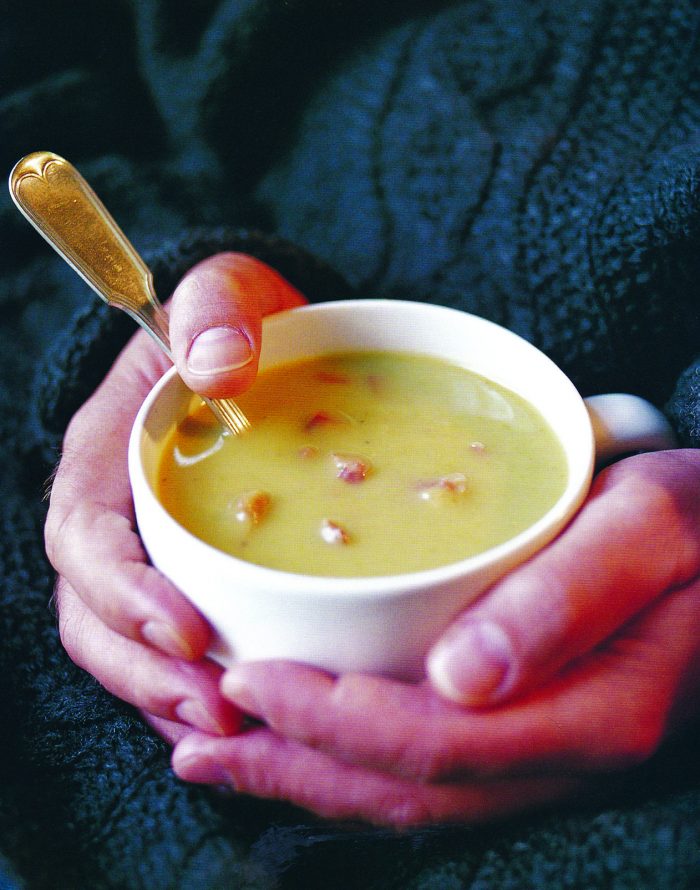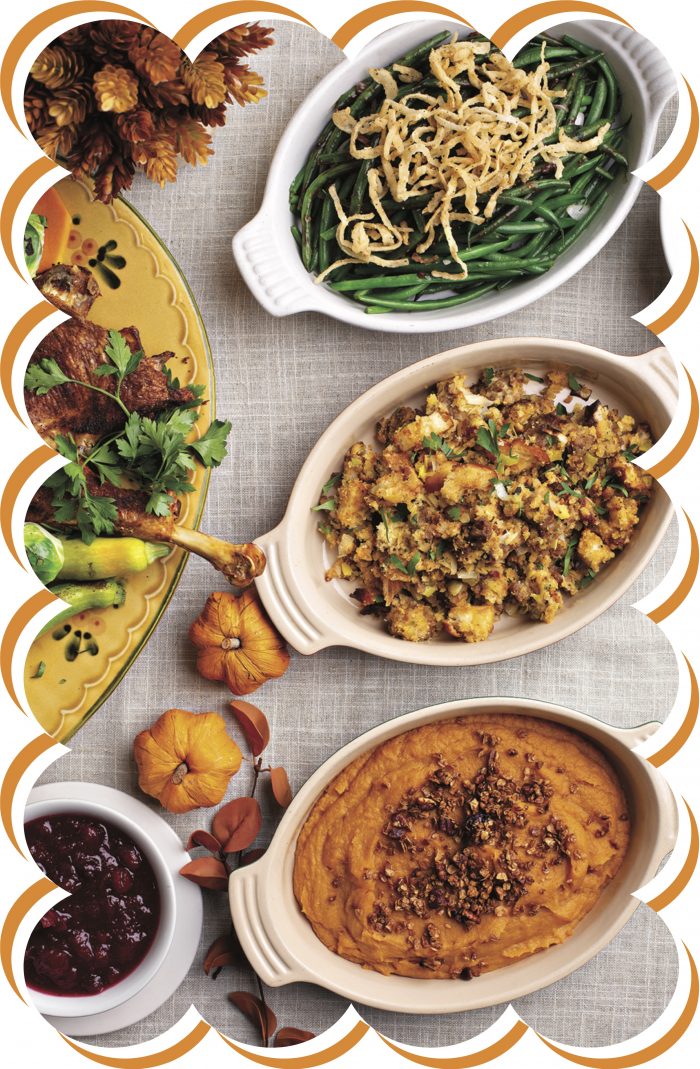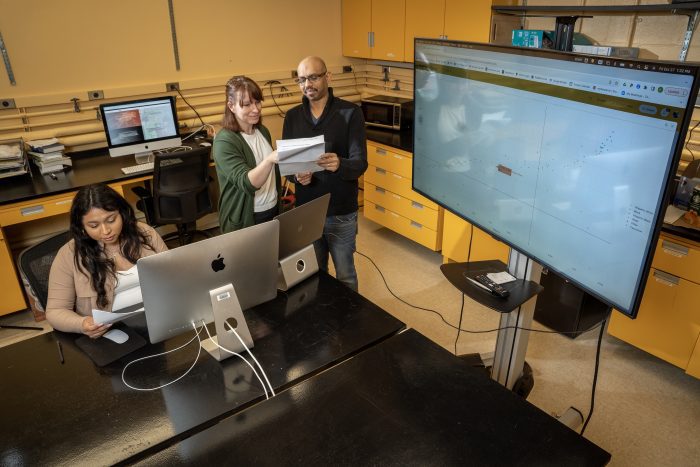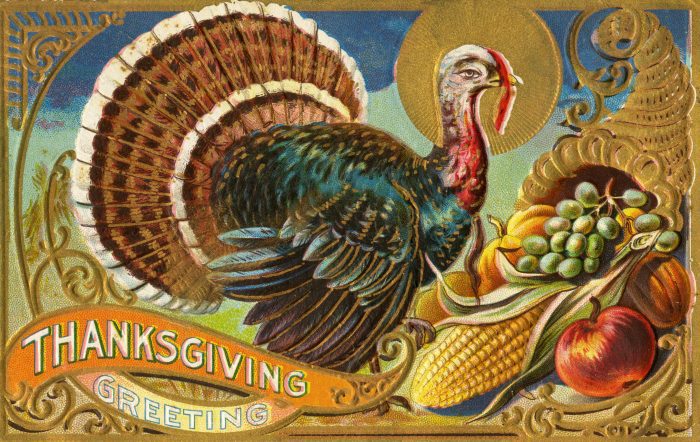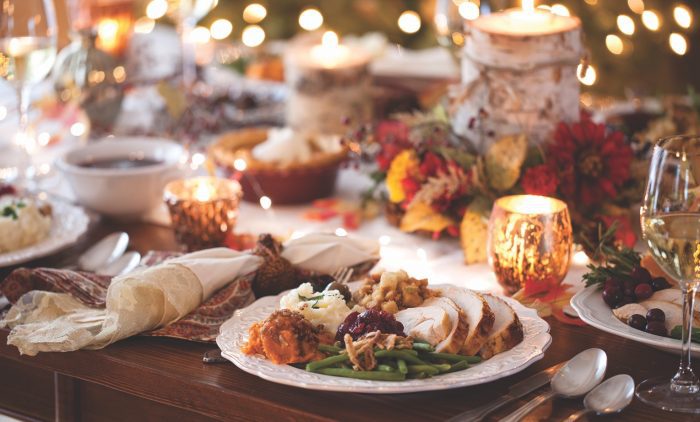By Heidi Sutton
One of the fastest ways to warm up when chilly temperatures set in is by enjoying hearty, hot soups at mealtime. The following recipes for “Puree of Split Pea Soup” and “Zucchini Soup with Cheddar Rusks” from The Culinary Institute of America Book of Soups make for a warming meal.
Puree of Split Pea Soup

YIELD: Makes 8 servings
INGREDIENTS:
4 strips bacon, minced
1 medium onion, diced (about 11⁄4 cups)
1 carrot, diced (about 1⁄3 cup)
1 celery stalk, diced (about 1⁄2 cup)
1 leek, white and light green part, diced (about 11⁄4 cups)
6 cups chicken broth
2 yellow or white potatoes, peeled and diced (about 2 cups)
1⁄2 pound split green or yellow peas
1 smoked ham hock
Sachet: 1 bay leaf, 1 whole clove, 1 garlic clove, and 4 to 5 peppercorns, enclosed in a large teaball or tied in a cheesecloth pouch
Salt, to taste
Freshly ground pepper, to taste
1 cup croutons
DIRECTIONS:
Cook the bacon in a soup pot over medium-high heat until crisp and brown. Remove the bacon with a slotted spoon; drain on paper towels and set aside. Pour off all but 3 tablespoons of the bacon fat. Add the onion, carrot, celery, and leek; stir to evenly coat with fat. Cover the pot and cook the vegetables over medium-low heat, stirring occasionally, until the onion is tender and translucent, 6 to 8 minutes.
Add the broth, potatoes, peas, and ham hock. Bring to a simmer and cook over medium heat, 20 minutes, stirring occasionally. Add the sachet and simmer until the split peas are soft, about 30 minutes. Skim away any scum during simmering.
Remove the sachet and discard. Remove the ham hock and set aside to cool. When cool enough to handle, cut the ham off the bone, dice, and set aside.
Strain the soup through a sieve, reserving the liquid. Puree the solids and return them to the pot. Add enough of the reserved liquid to achieve a thick consistency. Blend well. Stir in the ham and bacon. Season with salt and pepper. Serve in heated bowls, garnished with croutons.
Zucchini Soup with Cheddar Rusks
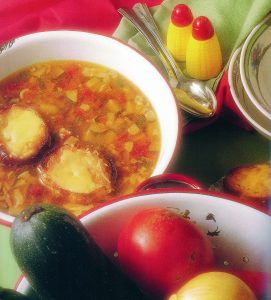
YIELD: Makes 8 servings
INGREDIENTS:
4 bacon strips, minced
2 onions, diced (about 21⁄2 cups)
4 garlic cloves, minced (about 2 teaspoons)
4 medium zucchini, diced (7 to 8 cups)
6 cups chicken broth
4 plum tomatoes, peeled, seeded and chopped, (about 1 cup)
1⁄2 cup tomato puree
4 tablespoons tarragon
2 tablespoons minced fresh basil
1⁄2 teaspoon salt, or to taste
1⁄4 teaspoon pepper, or to taste
8 cheddar rusks (see below)
DIRECTIONS:
Cook the bacon in a soup pot over medium heat until the fat is released and the bacon bits are crisp, 6 to 8 minutes. Add the onions and garlic. Cook, stirring frequently, until the onions are a light golden brown, 8 to 10 minutes. Add the zucchini, cover the pot and cook until the zucchini starts to become translucent, about 5 minutes. Add the broth, tomatoes, tomato puree, and vinegar. Bring the soup to a simmer and cook until the vegetables are very tender and the soup has developed a good flavor, 15 to 20 minutes. Add the basil to the soup, and season with salt and pepper. Serve in heated bowls, garnished with cheddar rusks.
Cheddar Rusks
YIELD: Makes 8 servings
INGREDIENTS:
8 slices French or Italian bread (1⁄2-inch thick)
1 cup grated cheddar cheese
DIRECTIONS:
Toast the bread until golden brown on both sides. Preheat the broiler. Scatter the cheese evenly over the toasted bread and broil until the cheese bubbles and begins to brown

